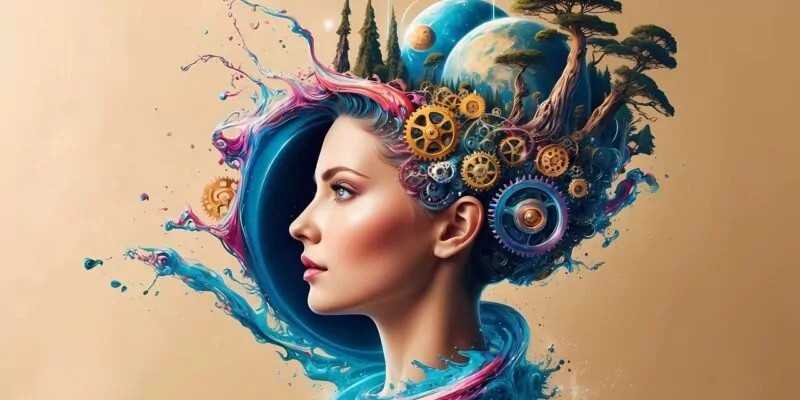The digital art landscape is undergoing a dramatic transformation, thanks to the rise of AI-generated art powered by machine learning and deep learning. As artificial intelligence continues to evolve, artists, designers, and creative professionals are increasingly embracing AI image generation tools and platforms to explore new dimensions of creativity.
In this article, we explore how AI technology is turning algorithms into artists, reshaping what it means to create, and redefining the future of digital art.
What Is AI-Generated Art?
AI-generated art refers to visual creations made with the assistance of AI image generation software. These systems are trained on massive datasets of artwork, photos, and patterns using machine learning techniques. Over time, they learn to recognize artistic styles, textures, color combinations, and composition rules, allowing them to generate new, original visuals on demand.
Popular AI image creators like DALL·E, Midjourney, and NightCafe have made it easier than ever to transform simple text prompts into stunning, professional-level artwork.
The Role of Machine Learning and Deep Learning
At the heart of AI art creation are powerful deep learning models like GANs (Generative Adversarial Networks) and transformers. These models use layered neural networks to understand, interpret, and generate complex images. As a result, the quality and realism of AI-generated images have reached new heights.
These advancements are not just technical—they are creative. Machine learning algorithms now assist artists by offering unexpected inspiration, new perspectives, and rapid experimentation options.
Why AI-Generated Art Is Gaining Popularity
1. Speed and Efficiency
Artists can create dozens of iterations in minutes using an AI image generation tool. This dramatically speeds up concept development, mood boarding, and project visualization.
2. Creative Exploration
AI art platforms offer limitless styles and possibilities. Whether you want to blend classical with cyberpunk or realism with surrealism, AI creative tools deliver results beyond traditional boundaries.
3. Accessibility
Even those without formal art training can now produce visually impressive work using AI artwork tools, making digital art creation more inclusive than ever.
4. Collaboration Between Human and Machine
Rather than replacing artists, AI for creative professionals enhances workflows, offering collaboration where humans guide the concept and AI executes it.
Top Platforms Powering the AI Art Movement
Let’s take a look at some of the most impactful AI image generation platforms fueling this creative revolution:
1. Midjourney
Focus Keywords: AI art generator, AI visual art, AI-generated creativity
Midjourney specializes in stylistic, emotive images and is beloved for its artistic flexibility. It’s perfect for album art, book covers, and abstract storytelling.
2. DALL·E 3
Focus Keywords: AI image creator, Artificial intelligence in art, AI image software
Developed by OpenAI, DALL·E 3 excels at translating complex textual descriptions into vivid and coherent imagery.
3. NightCafe Studio
Focus Keywords: AI image generation tool, Digital art software, AI for artists
A user-friendly platform that offers various styles and modes for artists to experiment with AI-generated art and style transfer.
4. Artbreeder
Focus Keywords: AI art platform, Creative AI tools, AI for designers
Great for morphing visuals and generating variations in character design, landscape art, and portraits.
AI and the Evolution of Digital Art
Traditional digital art software like Photoshop and Illustrator once defined the digital canvas. Now, AI art technology is taking creativity further by automating the initial stages of creation while allowing users to refine and personalize results.
This shift doesn’t diminish the role of artists—it expands it. Artists now act as curators, prompt engineers, and editors, blending intuition with algorithmic generation.
Challenges and Ethical Questions
As the use of AI in art grows, so do concerns over originality, copyright, and creative ownership. Who owns an AI-generated image? How should artists credit AI platforms? These are ongoing debates as the lines between human and machine-made art blur.
Additionally, there’s concern about the potential for AI tools to homogenize styles if overused without creative input. It’s important for artists to use AI creative tools as enhancements—not replacements—for their vision.
The Future of AI in Visual Art
The fusion of technology in art will only grow stronger. Future AI image generation tools will likely offer real-time collaboration, VR integrations, and voice-guided creativity. Artists will be able to sculpt, paint, and design with just prompts and gestures, making the creative process more immersive.
Final Thoughts
From abstract experiments to commercial campaigns, AI-generated art is leaving its mark on the creative world. With the power of machine learning, artificial intelligence, and AI art platforms, artists are not being replaced—they’re being empowered.
As we continue deeper into the digital era, embracing AI for artists and AI for designers means unlocking new frontiers in artistic expression. The canvas of the future is here—and it’s powered by code, creativity, and collaboration.

